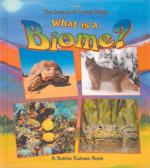|
This section contains 1,254 words (approx. 5 pages at 300 words per page) |

|
A biome is a particularly useful biogeographic unit that results from large-scale climatic patterns. A portion of a biome, such as the tropical rain forest found in the Amazon basin, may cover thousands of hectares. It will have recognizable vegetation features that impart a sameness that defines the unit. The fact that this region differs from others, such as the desert biome, is evident to even the most untrained observer. Frederic Clements (1874-1945) and Victor Shelford (1877-1968) observed in 1939 that not only was the vegetation characteristic, but that these were plant-animal formations with associated fauna. In the 1960s an ecological research effort, the International Biological Program, sought to characterize the structure and function of major biomes through intense study. American botanist and ecologist Robert Whittaker (1920-1980) summarized some characteristics of the biomes in his book Communities and Ecosystems, in which he arranged them graphically according to interacting gradients...
|
This section contains 1,254 words (approx. 5 pages at 300 words per page) |

|


